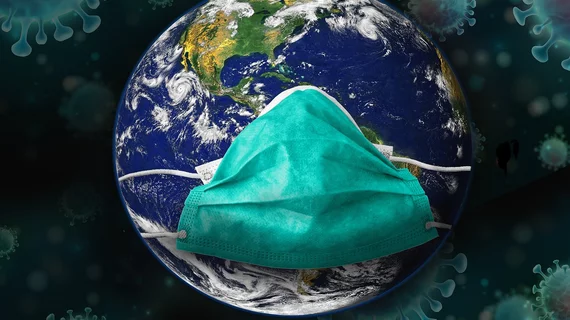All radiologists likely to encounter COVID-19 vaccine side effects in coming months, experts say
The American College of Radiology's (ACR) premier medical journal has released a new document to help radiologists manage the growing number of false-positive exams in patients who’ve received a COVID-19 vaccine.
Providers first reported swollen lymph nodes on imaging in January, beginning with findings imitating cancer on breast screening exams and recently extending to nearly all modalities, radiologists warned just last week.
In this article published Monday in JACR, Massachusetts General Hospital rads outlined steps providers can take to reduce unwarranted follow-up care for unilateral lymphadenopathy after vaccination. The authors said they hope to limit patient anxiety, avoid excess costs and any delays in vaccination and necessary imaging.
“Unilateral lymphadenopathy after COVID-19 vaccination is likely something that all radiologists will observe over the next several months,” Christoph Lee, MD, MBA, deputy editor of JACR, explained in a statement. “The recommendations by this author group may help practices manage this issue.”
The group’s entire 47-page guidance is based on three primary factors: timing and location of the injection, clinical context, and imaging findings, according to Constance D. Lehman, MD, PhD, director of breast imaging at the Boston-based institution, and colleagues.
In most clinical settings, they said, swollen lymph nodes on one side of the body up to six weeks after vaccination is a benign finding requiring clinical follow-up rather than additional imaging or biopsy.
During imaging interpretation, radiologists should have patients’ vaccine history, including date of vaccination, injection site (left/right; arm/thigh), and type of vaccine. All this can be gathered via intake forms, Lehman et al. noted.
Additionally, the MGH experts cautioned against postponing routine imaging or vaccinations in vulnerable populations such as racial/ethnic minorities who have been disproportionately impacted by the pandemic.
The researchers noted radiologists should adapt these guidelines to fit their patient population and specific practice, while always clearly communicating care plans with patients and providers.
“During these times of uncertainty, radiologists certainly may use discretion in tailoring these recommendations to patient and referring provider preferences, available resources, and the specific patient’s clinical presentation and imaging findings,” the authors concluded Monday.
Read the entire article shared in the Journal of the American College of Radiology here.

